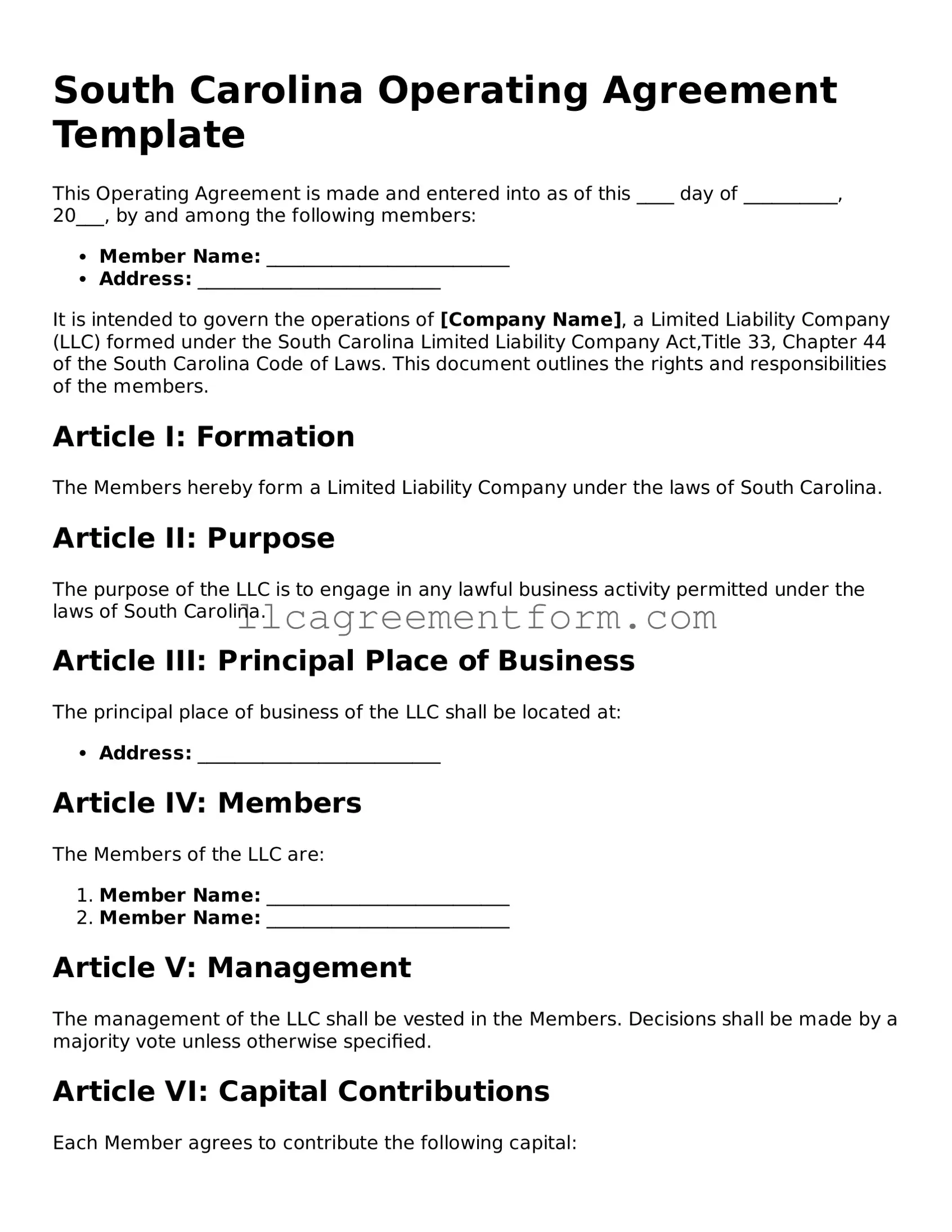Free Operating Agreement Document for South Carolina
The South Carolina Operating Agreement form is a crucial document for members of a limited liability company (LLC) in the state. This form outlines the management structure, responsibilities, and operational procedures of the LLC, ensuring that all members are on the same page. If you're ready to establish clear guidelines for your business, fill out the form by clicking the button below.
Get Operating Agreement Now
